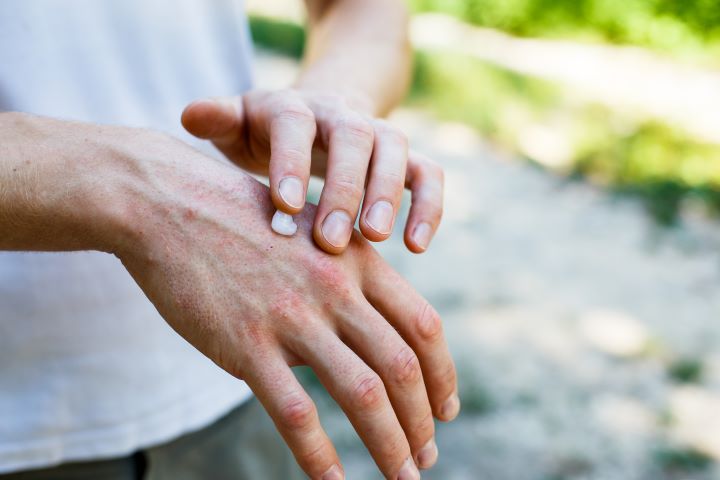Skin Rash: Understanding Causes, Types, and Treatments
Skin rashes are common medical conditions that affect people of all ages. These irritating and sometimes painful skin abnormalities can be caused by various factors, ranging from minor allergic reactions to more serious underlying health issues. Understanding the different types of skin rashes, their causes, and available treatments is crucial for effective management and prevention.

-
Infections: Bacterial, viral, or fungal infections can cause various types of skin rashes.
-
Autoimmune disorders: Conditions like lupus or psoriasis can manifest as skin rashes.
-
Heat and sweat: Excessive heat and sweating can lead to heat rashes, especially in warm climates or during physical activity.
-
Stress: Emotional stress can sometimes trigger or exacerbate skin conditions, leading to rashes.
-
Genetic factors: Some skin conditions, like eczema, have a genetic component that increases susceptibility to rashes.
Understanding the underlying cause of a skin rash is essential for proper treatment and management.
What are the different types of skin rashes?
Skin rashes come in various forms, each with distinct characteristics. Some common types include:
-
Eczema (Atopic Dermatitis): A chronic condition characterized by dry, itchy, and inflamed skin.
-
Contact Dermatitis: Caused by direct contact with irritants or allergens, resulting in red, itchy patches.
-
Psoriasis: An autoimmune condition that leads to thick, scaly patches on the skin.
-
Hives (Urticaria): Raised, itchy welts that can appear suddenly and often resolve quickly.
-
Heat Rash: Small, red bumps caused by blocked sweat ducts, common in hot and humid conditions.
-
Rosacea: A chronic condition causing redness and visible blood vessels on the face.
-
Seborrheic Dermatitis: Characterized by red, scaly patches often found on the scalp, face, and upper body.
Identifying the specific type of rash is crucial for determining the most effective treatment approach.
How are skin rashes diagnosed and treated?
Diagnosing skin rashes typically involves a thorough examination by a healthcare professional. The process may include:
-
Physical examination: A doctor will inspect the affected area and ask about symptoms and medical history.
-
Allergy tests: If an allergic reaction is suspected, skin prick tests or blood tests may be conducted.
-
Skin biopsy: In some cases, a small sample of skin may be taken for microscopic examination.
-
Blood tests: These can help identify underlying conditions or infections.
Treatment options vary depending on the type and cause of the rash:
-
Topical medications: Creams, ointments, or lotions containing corticosteroids, antihistamines, or antibiotics may be prescribed.
-
Oral medications: Antihistamines, antibiotics, or immunosuppressants may be recommended for certain conditions.
-
Light therapy: Controlled exposure to specific types of light can help manage some skin conditions.
-
Lifestyle changes: Avoiding triggers, maintaining proper hygiene, and managing stress can help prevent and manage rashes.
-
Home remedies: Cold compresses, oatmeal baths, and moisturizing can provide relief for some types of rashes.
It’s important to consult a healthcare professional for proper diagnosis and treatment, especially for persistent or severe rashes.
Can skin rashes be prevented?
While not all skin rashes can be prevented, there are several measures that can reduce the risk of developing them:
-
Practice good skin hygiene: Regular washing and moisturizing can help maintain skin health.
-
Identify and avoid triggers: Keep track of substances or situations that may cause rashes and avoid them when possible.
-
Use gentle, fragrance-free products: Choose skincare and laundry products that are less likely to irritate sensitive skin.
-
Protect your skin: Use sunscreen and wear protective clothing when exposed to the sun or harsh environments.
-
Manage stress: Practice stress-reduction techniques, as stress can exacerbate certain skin conditions.
-
Maintain a healthy lifestyle: A balanced diet, regular exercise, and adequate sleep can support overall skin health.
By implementing these preventive measures, individuals can reduce their risk of developing skin rashes and maintain healthier skin overall.
How do genetic factors influence skin rashes?
Genetic factors play a significant role in many skin conditions that manifest as rashes. Some examples include:
-
Atopic Dermatitis (Eczema): There is a strong genetic component to eczema, with certain gene mutations affecting skin barrier function.
-
Psoriasis: This autoimmune condition has a genetic basis, with several identified genes contributing to its development.
-
Rosacea: While the exact cause is unknown, there appears to be a genetic predisposition to this condition.
-
Ichthyosis: A group of genetic skin disorders characterized by dry, scaly skin.
Understanding the genetic factors behind these conditions can help in developing targeted treatments and preventive strategies. However, it’s important to note that having a genetic predisposition doesn’t necessarily mean an individual will develop the condition. Environmental factors and lifestyle choices also play crucial roles in the manifestation of genetic skin conditions.
In conclusion, skin rashes are complex medical conditions with various causes, types, and treatment options. While some rashes are minor and resolve on their own, others may indicate more serious underlying health issues. Proper diagnosis, treatment, and preventive measures are essential for managing skin rashes effectively. If you experience persistent or severe skin rashes, it’s crucial to consult a healthcare professional for personalized advice and treatment.
This article is for informational purposes only and should not be considered medical advice. Please consult a qualified healthcare professional for personalized guidance and treatment.





